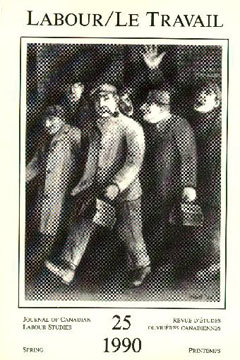Abstract
Three principal features distinguish the contemporary state of research in industrial relations. First, the unsettlement of fixed categories in the theoretical study of state and society turns the attention of political theorists towards this politically charged domain of dynamic order. Second, recent developments within the domain itself challenge the principal approaches whose competition has governed the discipline. Third, the elaboration of the discipline itself yields increased recognition of the need for heightened theoretical and methodological self-awareness. The decade of comparative studies of divergent union density rates between the United States and Canada provide materials for an exploration of these theoretical issues, especially in light of the fact that recent analytical consensuses are called into doubt but the most recent tendencies. A comparative approach oriented to a history-sensitive concept of "labour regimes'' offers a method capable of learning from the principal competing analytical strategies, while promoting a more open and reliable research programme than many of those considered. Critical encounters with the work of Lipset, Weiler, Teubner, Panitch and Swartz, and others are complemented by comparative historical study, in order to lay out the main elements of the approach proposed.
Résumé
Trois caractéristiques marquent l'état de la recherche contemporaine en relations industrielles. En premier lieu, la déstabilisation des catégories fixes dans les études théoriques sur l'Etat et la société dirige l'attention des politicologues vers ce domaine politisé d'ordre dynamique. Deuxièmement, les développements récents dans le domaine lui-même remettent en question les principales approches qui se disputent la discipline. Enfin, troisièmement, l'éloboration de la discipline même suscite une reconnaissance accrue de la nécessité d'en arriver à un niveau de conscience théorique et méthodologique plus élevé.
La décennie des études comparées du taux de densité syndicale divergents entre les Etats-Unis et le Canada offre de la matière pour explorer ces questions théoriques, surtout lorsque les nouvelles tendances remettent en doute les récents consensus analytiques. Une approche comparative axée sur un concept de "régimedu travail'' sensible à la dimension historique offre une méthode capable de s'inspirer des principales stratégies analytiques en concurrence, tout en proposant un programme de recherche plus ouvert et plus sûr qu'aucun de ceux qui ont été proposés. Un examen critique des ouvrages de Lipset, Weiler, Teubner, Panitche et Swartz et quelques autres, ainsi qu'une analyse historique comparative forment les éléments de base de l'approche proposée.
